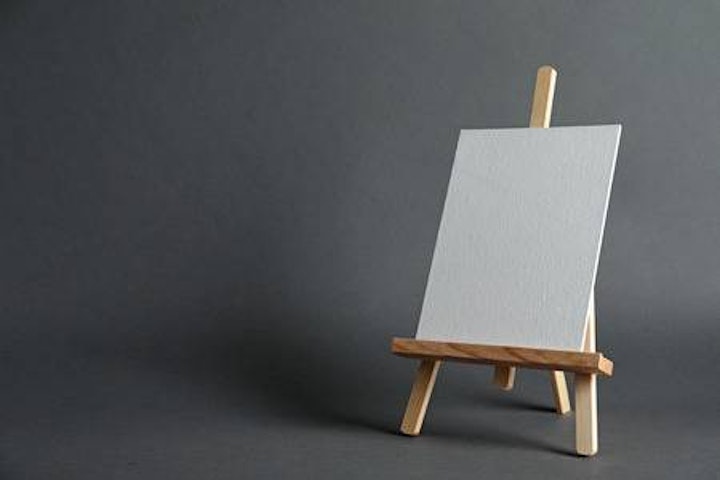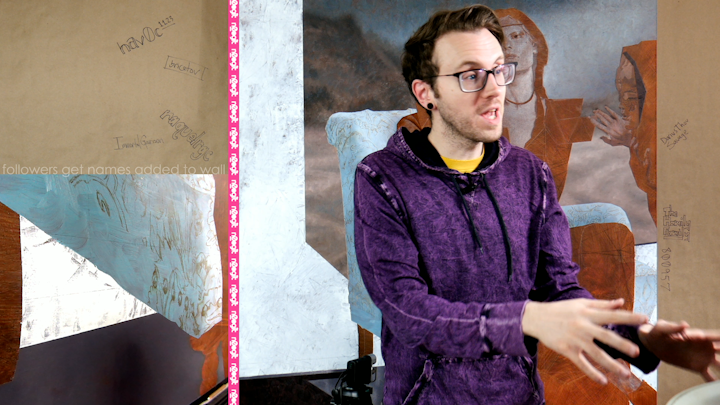How to Prep Your Palette for Oil Painting

So you’ve set up your panel/canvas following my guide, how to prep a canvas or panel for oil painting, and now you're ready to paint.
WRONG!
You probably have the wrong colors, if any at all (don't listen to me - break the rules...people paint with weird stuff). There is a traditional way to set up a palette that will help with a lot of things - mixing colors, glazing, application, etc. If you're just getting into painting, this organization up front is going to make everything easier to get used to.
So first off...
What colors?
Essentially, you want a warm and a cool version of each primary color of the subtractive system, a white, and some neutrals.
What is the subtractive system? Not a bad question...and one I could spend too much time talking about. Just know that the primary colors of the subtractive system are the primary colors you learned as a kid - blue, red, yellow (technically cyan, magenta, yellow. Take a look at the weird color thing on the flap of your cereal box.). Let's start there.
Primary colors
The reason you want a warm and cool version of each primary color is because it gives you control over the color you are mixing.
For example, lets say you have a blob of red paint (lets say its pure red for the sake of the example). You want to make that red blob into and orange blob. You have 2 different yellows - a warm yellow (slightly on the orange side) and a cool yellow (slightly on the green side).
If you add a warm yellow to the red, you're going to get a bright vibrant orange. If that's what you want, then great, but lets say you don't want a bright orange. You want a subdued, muted orange. If you add the cool yellow, which is slightly on the green side, you are adding green to red. Green and red are opposites on the colors wheel, called complementary colors. When you mix complimentary colors, you get neautrals, which are basically the opposite of bright colors. You mix in your cool yellow and you end up with a slightly subdued orange and you're a happy painter.
This is a quick example of a very deep subject, but hopefully you begin to get the idea. can easily make bright or subdued versions of any color you want when you have 2 versions.
White
White is white. It makes stuff lighter, called tinting. Pretty simple right? Not really. We have been talking about the color of the paint, but not the opacity. Certain paints will cover other colors better than others. There are different whites with different opacities, so most of the time you want more than one.
Notice black wasn't mentioned. Traditionally, black is bad. You can get much more depth making your own dark variations of colors by mixing dark blues and neutrals. That being said, that's the choice of the artist. I use black, but we're ignoring it for the example. Don't use it if you're a beginner.
Neutrals
There are 4 neutrals I recommend - Raw and burnt sienna, and raw and burnt umber. They all lean towards a different color, despite being neutral. They are a good starting point for flesh if you are painting directly.
Get to the List already
So, what are the names of these colors? There are a few options, but this is what I use.
1. Warm blue - Ultramarine blue
2. Cool blue - Cerulean blue
3. Cool yellow - Lemon yellow
4. Warm yellow - Cadmium yellow
5. Warm red - Cadmium red
6. Cool red - Alizarin crimson
7. Yellow neutral - Raw sienna
8. Orange neutral - Burnt sienna
9. Green neutral - Raw umber
10. Brown neutral - Burnt umber
11. White - Titanium white
So What Order Do They Go In?
You may not have even considered that they should be arranged in any order, but it’s a good idea to think about it. It can save you thinking time in the heat of the moment.
There are a lot of options, so I’m going to go over each one
Ordered by Hue
If you look at the numbered list above, you’ll notice that they start with a color and travel around the color wheel until you get to the neutrals. This is one of the most common ways to arrange your colors. It makes it very easy to tell what is close to what to make your colors pure, or what is far away to make your colors muted. You may even want to arrange them in a circle when you first start. You can put your neutrals off to the side.
Ordered by Opacity
Another way to arrange your palette is by paint opacity. This is a good option if you are already comfortable with color mixing and getting the color you want, but you have trouble gauging how your layers are going to interact with each other. This is also extremely important if you are painting indirectly, because you don’t want your glazing color to be so opaque that you completely cover your grisaille.
Combining Orders
If you end up painting for a long time over countless sessions, you will end up making tweaks constantly to save yourself active thought while mixing. You may find yourself making changes to your color choices to make combinations of different order systems. It’s possible to order your colors by both chroma and opacity (and any of the other possibilities that I don’t have the patience to go over). The important thing is that you find what works for you so that when you are painting, you feel like you are in control of your paint. Even if you want your image to be free and effortless, you need to know your paint. It’s tough to express freedom when its clear you’ve reworked the same are because you can’t get the right color.



